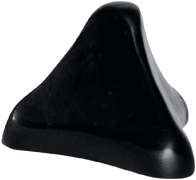The Importance of Self-Massage
It is well known and widely accepted that staying strong and healthy through regular exercise, is an essential part of maintaining general health and wellbeing.
However we often put ourselves at unnecessary risk of injury by neglecting to look after our posture and flexibility. Postural exercises, stretching, yoga and massage are all great ways to keep aligned and flexible.
In this article I will like to draw your attention to massage, in particular, the benefits of self-massage.
How Does Self-massage work?
Deep compression of a specific trigger point and tight muscle helps to relax muscle and break up adhesions formed between the muscle layers and surrounding structures.
What are trigger points?
Trigger points are specific knots that form in muscles, they are characterised by their referral of pain to different parts of the body, particularly when pressure is applied.
What causes trigger points and tight muscles?
Both issues occur when we, increase the amount of training or have differences from left to right with flexibility, movement patterns and posture. Nutrition, hydration, rest and stress can also contribute to trigger points and tight muscles.


How do you self-massage?
Given the fact that our arms and hands, the usual tools for massage, are attached to our bodies, we need to use external forces. The best way to do this is to use the force of gravity and a massage tool to help apply pressure to trigger points and tight muscles.
Fortunately for us these massage tools can be easily found and are relatively inexpensive, some examples of self-massage tools include;
Foam Roller’s
EZR’s
Pocket Physio’s
Spiky ball’s
Hard Rubber ball’s
Etc, etc, etc
Click on this link to download a spikey massage ball information sheet
What are the benefits self-massage?
To release the tension in tight muscles and trigger points. The aim is to increase flexibility in the muscles which will help realign and equalise muscle tension, correcting posture and movement patterns.
Self-massage allows YOU to control the pressure and find the ‘belly’ of the trigger point, you’re the only one who can feel it.
Self-massage allows you to have massage; daily, twice daily, hourly, whenever you like.
Having said the above, there is no substitution for your therapist, whether it’s a Massage therapist, Myotherapist or Physiotherapist. The knowledge that they possess through countless hours of training and experience is invaluable. They can help guide you to the trigger points and tight muscles that need to be worked on, by identifying; postural issues, movement pattern problems and poor flexibility.




